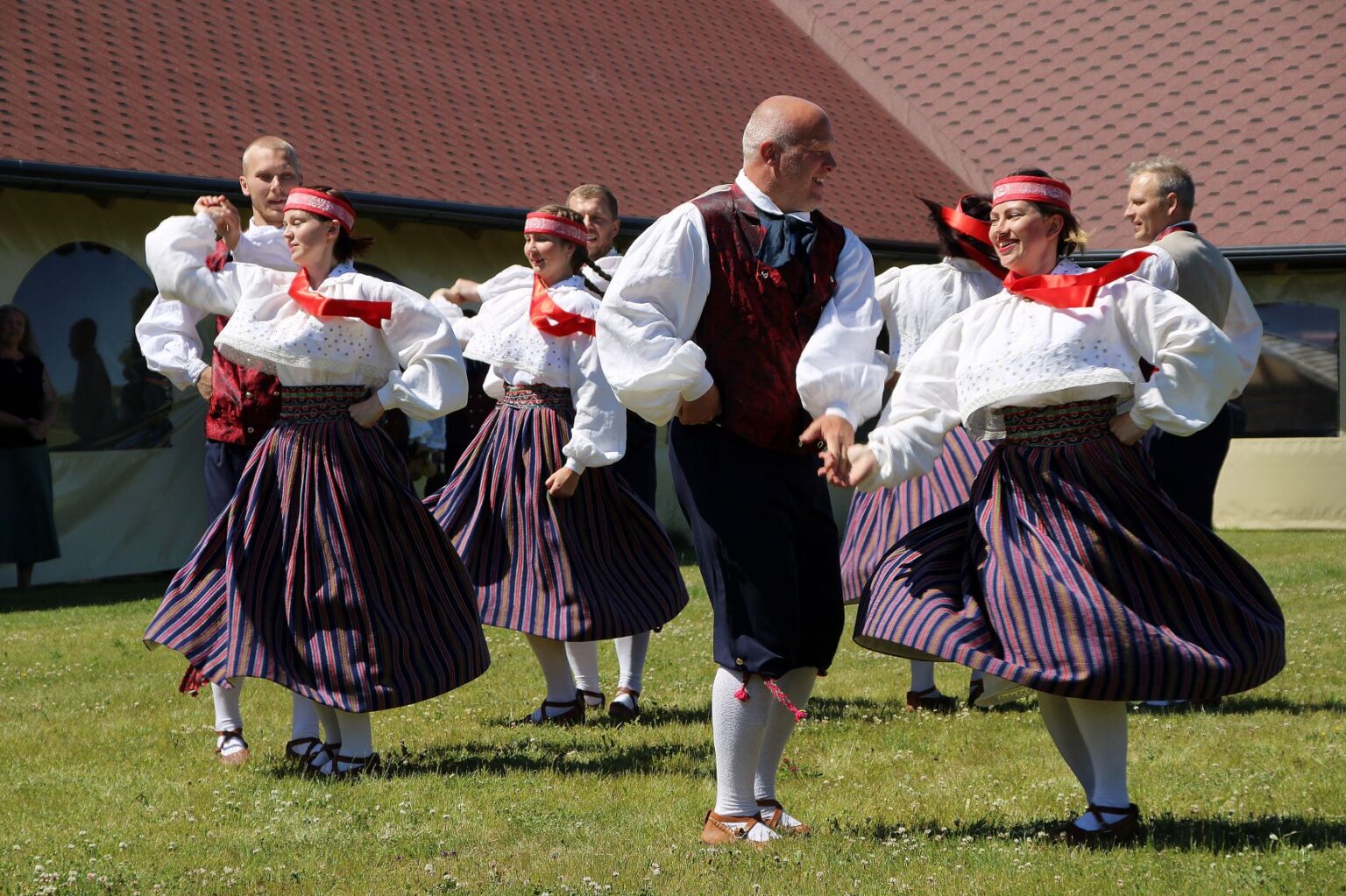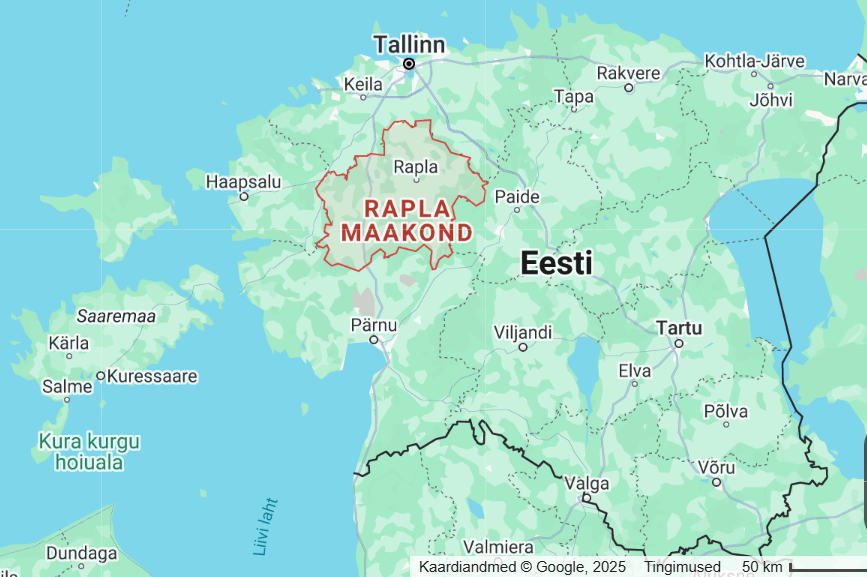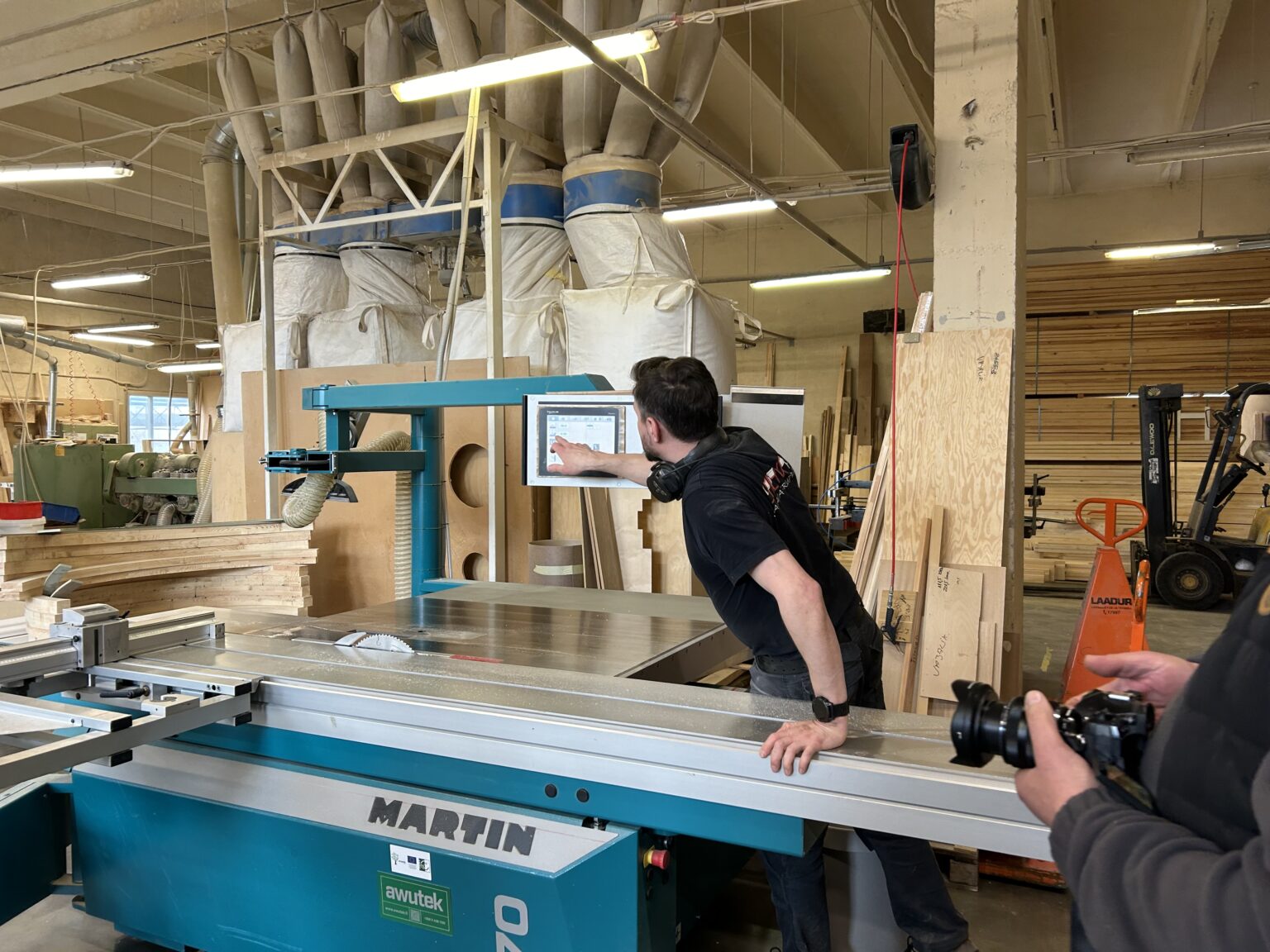
Rapla Partnership is a local LEADER action group established on May 9, 2006. Our goal is to develop local life, support the preservation and revitalization of rural areas and villages, promote sustainable development—including the growth of local businesses, services, tourism, employment and enhance the well-being of residents in Raplamaa.
The action group includes four municipalities of Raplamaa: Rapla, Märjamaa, Kohila, and Kehtna (excluding Järvakandi), as well as the Käru area in Türi municipality. As of 2025, the RaplaPartnership has 110 members (local governments, entrepreneurs, non-profit organizations).
The total area of the action group’s territory is 2,974.34 square kilometers, with the largest urban settlement being the town of Rapla. As of January 1, 2025, the population of the region is 33 394.
The region is naturally, economically, culturally and ethnically homogeneous, with no significant differences between local municipalities. It is united by a similar natural environmen — forests, fields, bogs, and marshes — which also forms the foundation for similar economic activities.
The region shares a common cultural and historical heritage and is characterized by national and linguistic homogeneity, with Estonians forming the dominant majority and other ethnic groups being a small minority. The area is intersected by key transport routes, including the Tallinn-Pärnu-Ikla, Tallinn-Türi-Paide-Viljandi and Paide-Rapla-Märjamaa-Haapsalu highways, as well as the Tallinn-Türi-Viljandi railway. In the future, the Rail Baltic high-speed railway from Tallinn will pass through the region. Additionally, the Kuusiku airfield, which serves small and hobby aviation, is located in Rapla County.
The Rapla Partnership has seven support measures, each contributing to rural development. Implementing these measures enhances rural life by strengthening community ties, supporting small businesses, boosting tourism potential and preserving local cultural heritage and environmentally rich residential areas. Additionally, it fosters cooperation with other organizations facing similar challenges at both national and international levels.
Strategic Support Measures of Rapla Partnership
- Investments in Communities
To improve community services, preserve cultural values, develop recreational areas and enhance the region’s image while promoting environmental sustainability and crisis preparedness. - Strengthening Business Competitiveness
To support small businesses, foster innovation, develop local food production and enhance the tourism sector by encouraging investment in key areas. - Entrepreneurship Development
To promote cooperation among businesses and organizations, encourage youth entrepreneurship, support joint marketing and enhance tourism visibility. - Community Development
To build strong and active communities, empower local leaders, promote rural life and balance innovation with tradition. - Development of Domestic Cooperation
To strengthen regional networks, encourage experience-sharing and support joint initiatives to enhance local development. - Domestic and International Cooperation
To lead cross-regional and international projects, expand cooperation networks and boost the region’s visibility and reputation. - ESF+ measure “Social well-being”
The aging population increases the need for quality long-term care, support systems, training, social inclusion, mental health resources and better access to information.
The digital book (projects of the period 2014-2020(22))
Contact us
Viljandi mnt 6, Rapla, Raplamaa, 79511, Estonia
www.raplaleader.ee
info@raplaleader.ee




